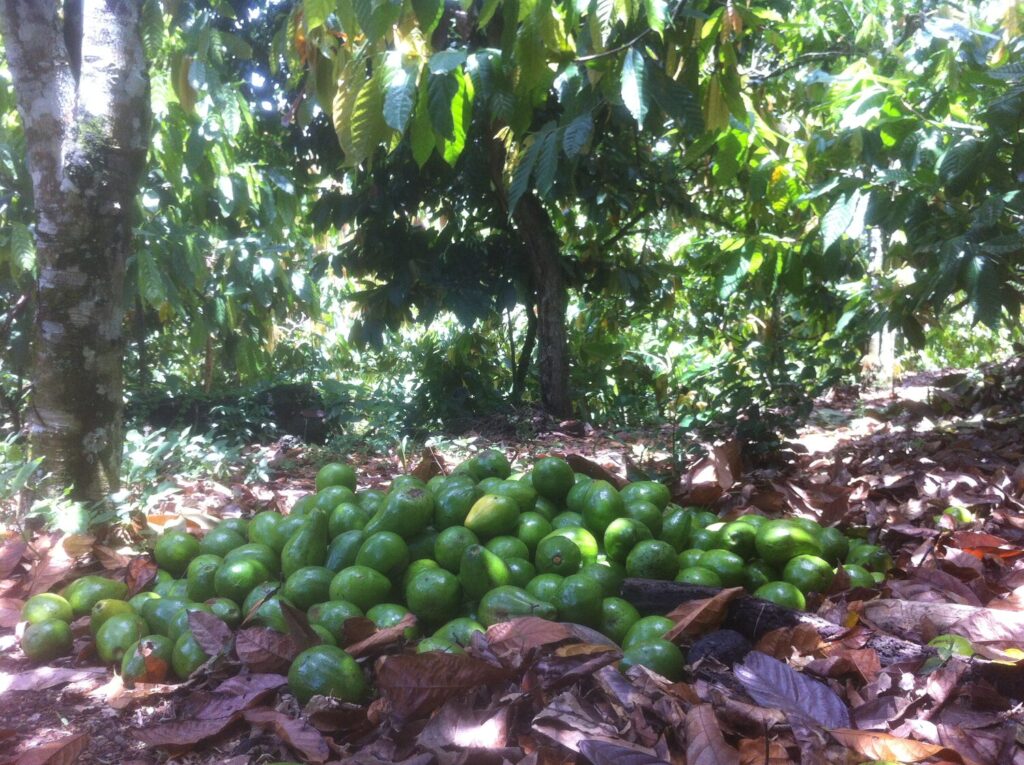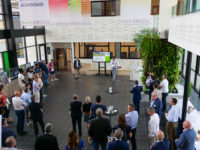Agroforestry is a core component of the Cacao Forest project, and we think it is important to take the time to explain this system and approach.
Overview
Agroforestry is a farming technique combining different species of trees and plants that grow around a main crop, with the intent of creating a more favorable and fertile ecosystem for each species.
Used since the dawn of time, agroforestry is a natural farming system. Early on, people quickly understood the benefits of farming near trees: shade, protection from the wind, humidity regulation, etc. Agroforestry has been used by different populations all over the world. Examples of agroforestry systems include bocage farming in Normandy, the Creole gardens in the Caribbean, “jungle rubber” farming in Indonesia, and berry growing and tree farming in Finland.
Between 1940 and 1960, much of the world’s population needed to increase the amount of land used for growing crops, applying intensive farming techniques and monoculture systems to increase yield, but eliminating the use of trees in the process. Today, we understand that the massive deforestation in recent decades, among other factors, is one of the major causes of global warming. In the tropics, farmland expanded exponentially to meet increasing demand for a wide variety of agricultural products (soy, palm oil, rubber, coffee, etc.). If we take cocoa as an example, production grew from 850,000 tons in the 1960s to 3 million tons today. For many countries, the huge increase in land use for cocoa trees has resulted in the destruction and even total eradication of forestland.
Cocoa as an example
In the wild, especially in its native South America, the cocoa tree grows beneath the equatorial forest canopy that the bigger trees create.
In many cases the smalltime farmers who produce fine cocoa continue to use agroforestry techniques. When expanding, while they may cut down some trees, they leave many in place and even replant others, applying a simple version of the natural agroforestry model.
Other agroforestry models
In Europe, certain ancestral agroforestry systems are still used today, like bocage farming or sylvopastoral grazing. In these systems, livestock grazes in fields or alpine meadows, maintaining farmland and eliminating the need to grow hay for feed (except for the winter).
Agroforestry offers several benefits
Agronomic benefits:
In addition to the shade they provide, trees maintain the right relative air humidity rate for many plant species. Soil decomposition stabilizes biomass recycling and the nutrient cycle. This process preserves and even restores soil fertility through biological activity, and also reduces erosion.
The combination of different species maintains a high level of plant and animal biodiversity. On cocoa tree plantations, trees also structure the habitats for the type of biodiversity that favors pollination. When well managed, they provide a reasonable alternative, through the right ecological balance, to using chemicals to regulate pest and other bioaggressor populations.
Agroforestry systems contribute much more to fight against climate change than simplified carbon sequestering models, in addition to reducing greenhouse gas emissions.
Economic benefits:
Depending on the species present, the biodiversity in an agroforestry system also provides farmers with steady revenues throughout the year. Fruit from trees growing on cocoa plantations and other derivative products (such as medicinal bark, wood, caterpillars, and palm oil and wine) can be used by farmers and their families (for significant savings) and/or be sold on the market as another source of income in addition to cocoa.
Creating well-balanced agroforestry systems that perform well is not an easy task: several agronomic, ecologic, economic, and social factors need to be considered (especially grower education) to avoid unexpected negative outcomes. This is Cacao Forest’s primary focus: testing the feasibility of different cocoa agroforestry models in several areas across the Dominican Republic. To date, the initial results are promising. We will share more detailed results as soon as possible!













